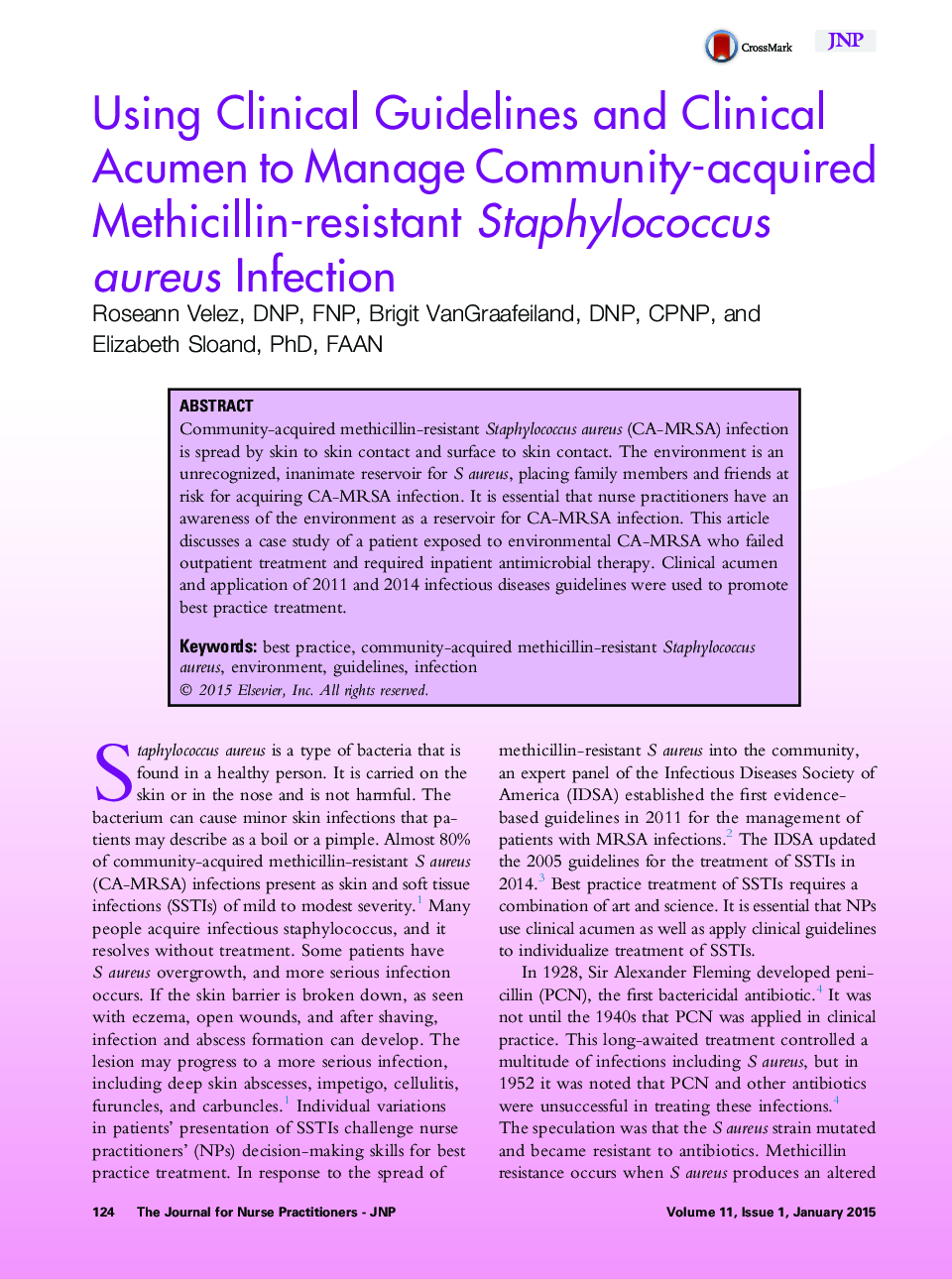| Article ID | Journal | Published Year | Pages | File Type |
|---|---|---|---|---|
| 2663430 | The Journal for Nurse Practitioners | 2015 | 7 Pages |
•The environment is an unrecognized reservoir for CA-MRSA infection.•Individualized approach to treatment of CA-MRSA promotes best practice.•Minimizing infection rates requires treatment beyond traditional approaches.
Community-acquired methicillin-resistant Staphylococcus aureus (CA-MRSA) infection is spread by skin to skin contact and surface to skin contact. The environment is an unrecognized, inanimate reservoir for S aureus, placing family members and friends at risk for acquiring CA-MRSA infection. It is essential that nurse practitioners have an awareness of the environment as a reservoir for CA-MRSA infection. This article discusses a case study of a patient exposed to environmental CA-MRSA who failed outpatient treatment and required inpatient antimicrobial therapy. Clinical acumen and application of 2011 and 2014 infectious diseases guidelines were used to promote best practice treatment.
